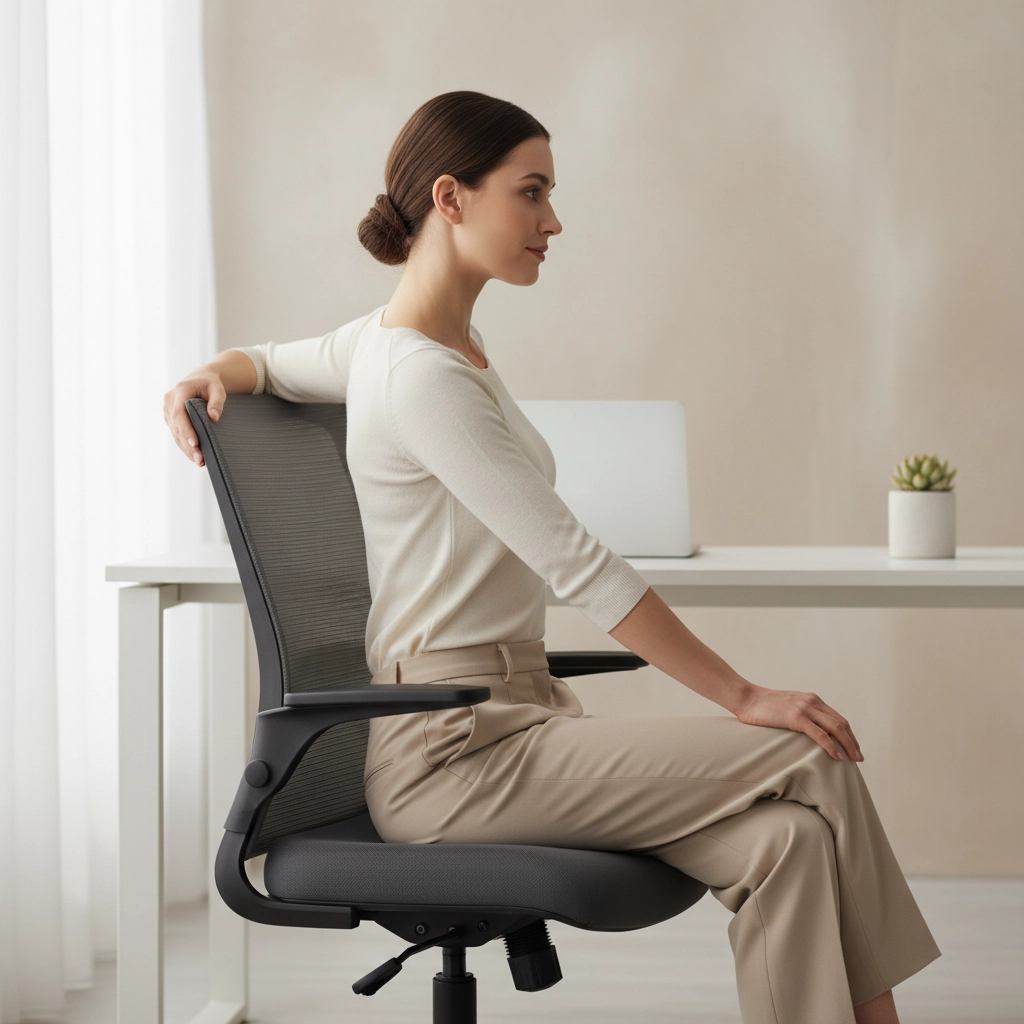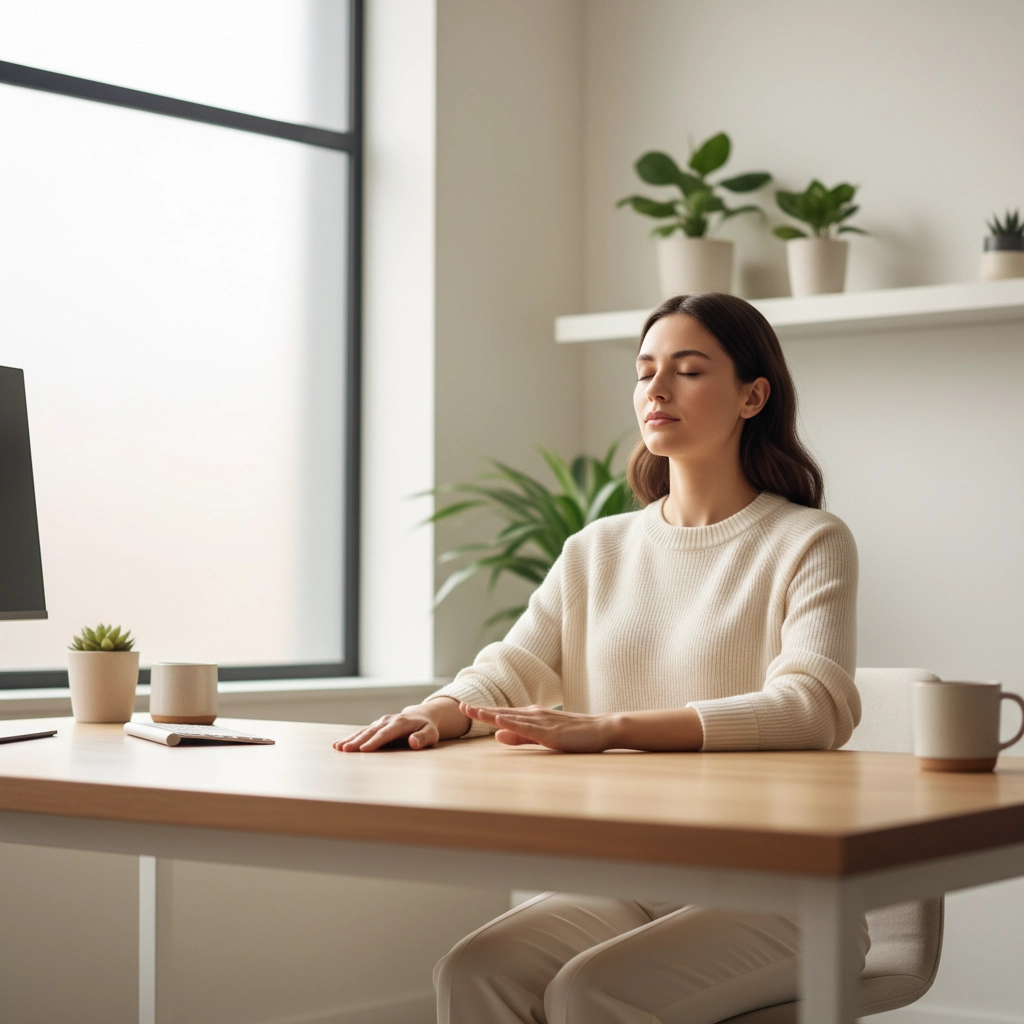Struggling With Daily Aches? 10 Quick Pain Relief Tips You Can Do at Your SE1 Desk
- alexjamescole
- Oct 11
- 6 min read
Do you find yourself reaching for another painkiller before you've even finished your morning coffee? Are your shoulders creeping up towards your ears by 11am, and does your lower back feel like it's staging a full-scale rebellion by lunchtime?
You're absolutely not alone. Whether you're working from a sleek office in London Bridge or hunched over your laptop in your SE1 flat, millions of us are experiencing the same daily battle against desk-related aches and pains. The average person now spends over 5 hours and 40 minutes sitting each day, and our bodies are definitely feeling the strain.
But here's the encouraging news: you don't need to resign yourself to a life of constant discomfort. With just a few minutes throughout your day and some simple techniques you can do right at your workstation, you can start fighting back against those persistent aches. Let's explore 10 practical, evidence-based strategies that will have you feeling more comfortable and energised, no matter how long your working day stretches.
Quick Desk Stretches That Actually Work
1. The Upper Trapezius Stretch: Your Neck's Best Friend
That tight, achy feeling along the side of your neck? It's likely your upper trapezius muscle crying out for attention. This simple stretch is a game-changer and takes less than two minutes.
Gently tilt your head to one side, bringing your ear towards your shoulder until you feel a comfortable stretch along the opposite side of your neck. Hold this position for a full minute – yes, a whole minute! – then switch sides. You'll be amazed at how much tension this releases. The key is consistency; try to do this stretch every couple of hours throughout your day.
2. Seated Spinal Twist: Liberation for Your Lower Back
Your spine loves movement, but sitting keeps it locked in one position for hours. The seated spinal twist is like giving your back a gentle, refreshing wake-up call.

Sit up straight with your feet flat on the floor. Place one hand on the backrest of your chair, then gently twist your torso towards that side while keeping your spine long and proud. Hold for 15-30 seconds, feeling the stretch along your entire back, then switch sides. This movement helps combat the forward hunching we all tend to develop and gives your spinal joints the mobility they're craving.
3. The Cat-Cow Flow: Spinal Magic in Your Chair
You might know cat-cow from yoga classes, but this adapted version works beautifully right in your office chair. It's particularly wonderful for improving spinal flexibility and reducing that stiff, locked feeling in your mid-back.
Sit upright with your feet flat and hands resting on your knees. Inhale as you arch your back gently, lifting your chest and looking slightly upward (cow pose). Then exhale as you round your back, tucking your chin towards your chest (cat pose). Flow between these positions 5-10 times, moving slowly and mindfully. Your spine will thank you for this gentle mobility break.
4. Scapular Squeezes: Antidote to Rounded Shoulders
If you could see yourself from the side right now, chances are your shoulders have rolled forward and your shoulder blades have drifted apart. Scapular squeezes help reverse this common desk posture problem.
Stand tall (or sit with excellent posture) and imagine you're trying to squeeze a tennis ball between your shoulder blades. Hold this squeeze for a few seconds, feeling your chest open and your shoulders move back into their proper position. Release and repeat 10-15 times. This exercise is fantastic for counteracting the internal rotation that happens when we type and use mice all day.
Movement and Posture Game-Changers
5. Hip Flexor Stretches: Freedom for Tight Hips
Your hip flexors – the muscles at the front of your hips – become increasingly tight when you sit for extended periods. This tightness doesn't just affect your hips; it can contribute to lower back pain and poor posture too.
Every hour or so, stand up and step one foot back into a gentle lunge position. You'll feel a stretch along the front of the hip of your back leg. Hold for 30 seconds, then switch sides. If you're in an open office and feel self-conscious, you can even do a modified version by standing and simply lifting one knee towards your chest, holding for a few seconds before switching legs.
6. Thoracic Extension: Combat the Computer Hunch
The thoracic spine – your mid-back – often becomes stiff and rounded from prolonged computer work. This simple extension exercise helps restore its natural curve and reduces that hunched-over feeling.

Sit in your chair and place your hands behind your neck, fingers interlaced. Gently bend backwards, ensuring the movement comes from your mid-back rather than your neck. Think about opening your chest towards the ceiling. Hold for a few seconds before returning to your starting position. Repeat 5-8 times throughout the day.
7. The Hourly Movement Break: Non-Negotiable Self-Care
This isn't just a tip – it's a prescription for your wellbeing. Every single hour, stand up and move for at least 2-3 minutes. It doesn't matter what you do: walk to refill your water bottle, do some gentle shoulder rolls, or simply stand and stretch your arms overhead.
Your joints stiffen when held in the same position for too long, and your circulation slows down. These regular movement breaks act like a reset button for your entire musculoskeletal system. Set a timer on your phone if you need to – your body will quickly start to crave these mini-breaks.
Ergonomic and Wellness Strategies
8. Workstation Setup: Your Foundation for Comfort
Sometimes the solution isn't just about exercises – it's about creating an environment that supports your body rather than working against it. Your workstation setup can make or break your comfort levels.
Position your monitor at eye level and about an arm's length away. Your feet should rest flat on the floor (or on a footrest) with your knees at roughly 90 degrees. Your chair should support the natural curve of your lower back. If you're working on a laptop, consider investing in an external keyboard and mouse so you can raise your screen to the proper height.
These adjustments might seem small, but they reduce unnecessary strain on your neck, shoulders, wrists, and back throughout your entire working day.
9. Deep Breathing: The Stress-Tension Connection
Physical tension and emotional stress feed into each other in a continuous cycle. When we're stressed, our muscles tighten. When our muscles are tight, we feel more stressed. Deep breathing is your secret weapon for breaking this cycle.

Try the 4-4-4 breathing technique: breathe in through your nose for four counts, hold for four counts, then exhale through your mouth for four counts. This simple practice triggers your body's relaxation response and helps release muscle tension you might not even realise you're holding. It's completely discreet and can be done during video calls, while reading emails, or whenever you notice tension creeping in.
10. Mindful Body Check-ins: Awareness is the First Step
Throughout your day, take brief moments to tune into your body. How are you holding your shoulders? Is your jaw clenched? Are you holding your breath? This isn't about judging yourself – it's about developing awareness so you can make gentle adjustments before tension builds into pain.
Set random reminders on your phone or use natural transition points (like between meetings or after sending an important email) to do these quick check-ins. Often, simply noticing that you're holding tension is enough to help you release it.
When to Seek Professional Help
While these desk-based strategies can work wonders for everyday aches and general discomfort, it's important to recognise when your pain might need professional attention. If you're experiencing persistent pain that doesn't improve with these techniques, sharp or shooting pains, numbness or tingling, or any symptoms that interfere with your sleep or daily activities, it's time to seek professional guidance.
At SE1 Osteo and Rehab Clinic, we understand the unique challenges faced by desk workers in our busy London community. Sometimes what feels like simple muscle tension can actually be a sign that your body needs more comprehensive support.
Your Journey to Desk Comfort Starts Now
Remember, consistency is far more important than perfection when it comes to managing desk-related discomfort. You don't need to do all ten of these techniques perfectly every single day. Start with the ones that resonate most with your specific problem areas, and gradually build them into your daily routine.
Your body has an incredible capacity for healing and adaptation. By giving it the movement, stretches, and ergonomic support it needs, you're not just managing pain – you're actively investing in your long-term comfort and wellbeing. Every small step you take today is building towards a more comfortable, pain-free tomorrow.
Which of these techniques will you try first? Your future self – the one who finishes the workday feeling energised rather than exhausted – is already thanking you for taking this first step towards better desk wellness.
_edited.jpg)




Comments